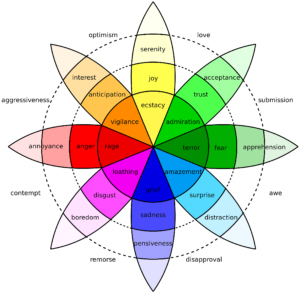Performing Under Pressure

 Burnout is an epidemic affecting the modern workplace today. All of us experience stress at work at one time or another, but burnout is a different beast. While the two can feel very similar, it is crucial to your well-being that you’re able to recognize when you are crossing that line. Equally, if not even more important, is that you possess the ability to prevent it – or if need be, recover from it.
Burnout is an epidemic affecting the modern workplace today. All of us experience stress at work at one time or another, but burnout is a different beast. While the two can feel very similar, it is crucial to your well-being that you’re able to recognize when you are crossing that line. Equally, if not even more important, is that you possess the ability to prevent it – or if need be, recover from it.
One of our experts, Audrey Halpern, ran a workshop on just this topic back in April of this year. Audrey had a ton of great tips for recognizing your stress and emotions, plus how to avoid burnout in the long run.
Primarily, it is important to recognize the difference between stress and burnout. Both share similar symptoms – feelings of irritation or anger, lack of focus, forgetfulness, muscle tension, and feelings of sadness or hopelessness, just to name a few. However, there is a distinct difference between stress and burnout.
Stress is relatively short-term – it can consume several hours or even days – typically caused by distress related to an issue or a collection of issues and is resolved as a result of their resolution.
Burnout is caused by PROLONGED periods of elevated stress, where you are continuously working hard with little to no resolution or fulfillment. Recognizing burnout is not as easy as evaluating how much work someone is doing or how much sleep they are getting but can often be identified by increased cynicism or overt negativity related to the job.
So, stress is often unavoidable, but how can we prevent the prolonged stress from becoming burnout?

Audrey offers several pieces of good advice on this matter:
Take a Step Back
It is important to take some time and distance away from the stress of work, then utilize that time to focus and evaluate yourself. Recognize the causes of the stress, and your feelings and emotions that surround the situation. Try to trust your self-awareness, don’t be hard on yourself, nor deny the feelings you identify.
Stop Multitasking
Multitasking or frequent task-switching may seem like an effective way to get a lot done at once; however, studies have shown that it’s counterproductive. Furthermore, multitasking not only negatively impacts productivity but over time, can actually cause long-term memory loss!
Communicate
Be honest with your team and leaders when you are struggling. Don’t default to “I’m fine” and don’t assume the people around you can tell when something is wrong. The only way to make sure they know is to bring it up. And make sure you are delegating and asking for help whenever you feel overwhelmed.
Set Boundaries
Remember how on a plane you are supposed to put your oxygen mask on first before helping others? Recognize your limits and needs and PUT YOURSELF FIRST. Make a detailed plan for yourself based on your safety PLUS comfort and communicate this plan with your team as well as leadership. Practice saying “no.” If the word “no” makes you uncomfortable right now, try using “no, but” statements. (i.e., “no, but I could start working on that in an hour” or “no, but I could ask Sarah if she could help with that”). Or try using “no, because” statements. (i.e., “no, because I have to meet the deadline on the task I am working on right now and cannot have any distractions”)
Build Resilience
Audrey states there are five main pillars to building reliance that will help you deal with oncoming stress better in the future:
- Be aware of your own stress and emotions
- Practice being present in the moment instead of worrying about the past or future
- Unashamedly practice self-care as often as you need to
- Build and foster positive relationships with people who care about you
- Recognize and work towards your personal purpose
The full workshop is packed with information about burnout, building resilience under pressure, and how to put yourself first. For the full experience, you can watch here it now.
And remember to put your mask on first!